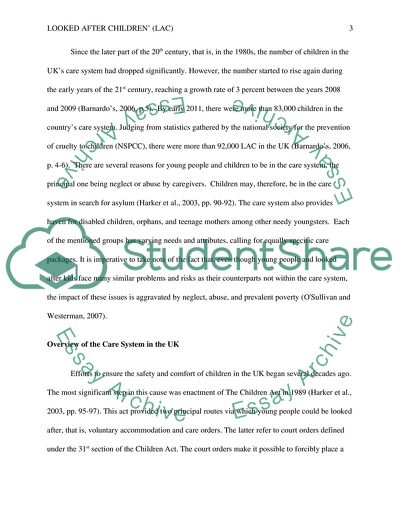Cite this document
(The Experiences and Outcomes for Looked after Children in the UK Term Paper, n.d.)
The Experiences and Outcomes for Looked after Children in the UK Term Paper. Retrieved from https://studentshare.org/social-science/1829241-explore-the-experiences-and-outcomes-for-looked-after-children-lac-in-the-uk-in-the-context-of-both-the-systems-for-lac-and-wider-issues-in-relation-to-childhood-one-or-a-number-of-particular-areas-may-also-be-focussed-on
The Experiences and Outcomes for Looked after Children in the UK Term Paper. Retrieved from https://studentshare.org/social-science/1829241-explore-the-experiences-and-outcomes-for-looked-after-children-lac-in-the-uk-in-the-context-of-both-the-systems-for-lac-and-wider-issues-in-relation-to-childhood-one-or-a-number-of-particular-areas-may-also-be-focussed-on
(The Experiences and Outcomes for Looked After Children in the UK Term Paper)
The Experiences and Outcomes for Looked After Children in the UK Term Paper. https://studentshare.org/social-science/1829241-explore-the-experiences-and-outcomes-for-looked-after-children-lac-in-the-uk-in-the-context-of-both-the-systems-for-lac-and-wider-issues-in-relation-to-childhood-one-or-a-number-of-particular-areas-may-also-be-focussed-on.
The Experiences and Outcomes for Looked After Children in the UK Term Paper. https://studentshare.org/social-science/1829241-explore-the-experiences-and-outcomes-for-looked-after-children-lac-in-the-uk-in-the-context-of-both-the-systems-for-lac-and-wider-issues-in-relation-to-childhood-one-or-a-number-of-particular-areas-may-also-be-focussed-on.
“The Experiences and Outcomes for Looked After Children in the UK Term Paper”, n.d. https://studentshare.org/social-science/1829241-explore-the-experiences-and-outcomes-for-looked-after-children-lac-in-the-uk-in-the-context-of-both-the-systems-for-lac-and-wider-issues-in-relation-to-childhood-one-or-a-number-of-particular-areas-may-also-be-focussed-on.


